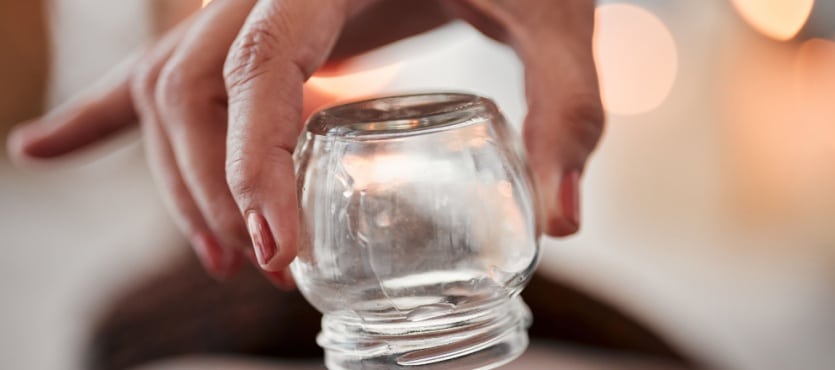Cupping therapy, an ancient practice rooted in traditional Chinese medicine, has gained renewed interest and recognition in modern healthcare. This therapeutic technique involves placing suction cups on the skin to create a vacuum effect, which draws blood flow to the surface and promotes healing in the underlying tissues. In today’s article, we’ll discuss the history of cupping therapy, its modern applications, and how it can be used to treat various conditions, improve circulation, and support recovery.
The History of Cupping Therapy
Cupping therapy has been practiced for thousands of years, with its origins traced back to ancient Chinese, Egyptian, and Middle Eastern cultures. Historical texts, such as the Ebers Papyrus from ancient Egypt, describe the use of cupping to treat a range of ailments. In traditional Chinese medicine, cupping is believed to balance the flow of energy, or qi, within the body, thereby promoting healing and restoring health.
Over the centuries, cupping techniques have evolved, but the fundamental principles remain the same. Today, cupping therapy is widely used by healthcare practitioners, including chiropractors, physical therapists, and acupuncturists, to support a variety of health and wellness goals.
How Cupping Therapy Works
Cupping therapy involves placing cups made of glass, silicone, or plastic on the skin to create a vacuum. This suction can be achieved through different methods, such as heating the air inside the cup before placing it on the skin or using a mechanical pump. The vacuum effect pulls the skin and underlying tissues upward into the cup, increasing blood flow to the area and promoting a range of therapeutic benefits.
Types of Cupping
There are several types of cupping techniques, including:
- Dry Cupping: This method involves creating suction without any additional incisions or fluids. The cups are left in place for several minutes to achieve the desired effect.
- Wet Cupping: Also known as hijama, this technique involves making small incisions on the skin before applying the cups. The suction draws out a small amount of blood, which is believed to remove toxins and promote healing.
- Massage Cupping: In this technique, the cups are moved along the skin to provide a massage-like effect. This method can help relieve muscle tension and improve lymphatic drainage.
Modern Applications of Cupping Therapy
Cupping therapy is used to treat a variety of conditions and promote overall well-being. Some of the common applications include:
Pain Relief
Cupping therapy is often used to relieve pain associated with musculoskeletal conditions, such as back pain, neck pain, and joint pain. The increased blood flow to the affected area helps reduce inflammation, relax muscles, and alleviate discomfort.
Improved Circulation
By drawing blood to the surface, cupping therapy enhances circulation and promotes the delivery of oxygen and nutrients to tissues. This improved blood flow can accelerate the healing process and support overall cardiovascular health.
Detoxification
Cupping therapy is believed to facilitate the removal of toxins from the body by promoting lymphatic drainage. This detoxifying effect can help improve immune function and support the body’s natural healing processes.
Stress Reduction
The relaxation response induced by cupping therapy can help reduce stress and promote mental well-being. The therapy’s calming effect on the nervous system can lead to decreased anxiety and improved mood.
Enhanced Athletic Performance
Athletes use cupping therapy to support their training and recovery routines. The therapy can help reduce muscle soreness, improve flexibility, and enhance overall performance by promoting faster recovery and reducing the risk of injury.
The Benefits of Cupping Therapy
Cupping therapy offers a range of benefits, making it a valuable addition to modern healthcare practices. Some of the key benefits include:
- Muscle Relaxation: Cupping helps release tight muscles and reduce soreness, making it an effective therapy for those experiencing muscle fatigue from intense physical activity.
- Pain Relief: The increased circulation resulting from cupping can help reduce inflammation and alleviate pain, particularly for individuals with chronic pain conditions.
- Improved Flexibility and Mobility: By reducing muscle tension and promoting tissue elasticity, cupping can enhance flexibility and range of motion, contributing to better physical performance and reduced injury risk.
- Detoxification and Relaxation: Cupping promotes the removal of toxins from the body and induces a deep state of relaxation, supporting overall wellness and mental clarity.
Discover the Benefits of Cupping Therapy
Cupping therapy, with its ancient roots and modern applications, offers a holistic approach to health and wellness. Whether used to relieve pain, improve circulation, or support athletic performance, this versatile therapy can provide significant benefits for a wide range of individuals. As part of a comprehensive healthcare plan, cupping therapy can help promote recovery, enhance physical function, and improve overall well-being.
If you’re interested in experiencing the benefits of cupping therapy, consider consulting with a qualified healthcare practitioner who can tailor the treatment to your specific needs and goals. Embrace the power of this ancient practice and discover how it can support your journey to optimal health.
For more information or to schedule an appointment, visit the Flex Spine and Sport contact page.

